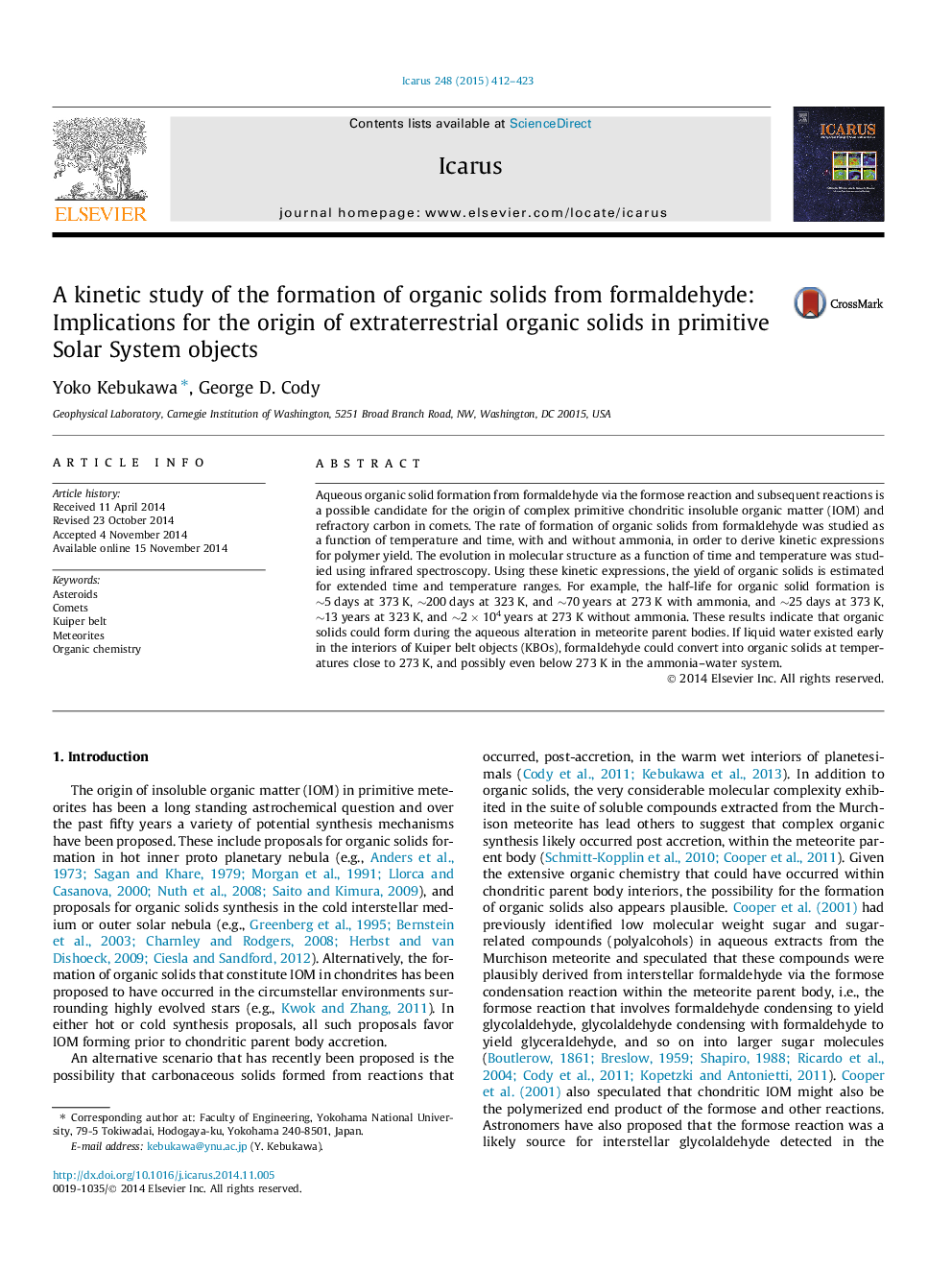| کد مقاله | کد نشریه | سال انتشار | مقاله انگلیسی | نسخه تمام متن |
|---|---|---|---|---|
| 8137183 | 1523542 | 2015 | 12 صفحه PDF | دانلود رایگان |
عنوان انگلیسی مقاله ISI
A kinetic study of the formation of organic solids from formaldehyde: Implications for the origin of extraterrestrial organic solids in primitive Solar System objects
ترجمه فارسی عنوان
مطالعه سینتیکی تشکیل جامدات آلی از فرمالدئید: پیامدهای منشاء مواد جامد آلی فرابریز در اجسام اولیه خورشیدی
دانلود مقاله + سفارش ترجمه
دانلود مقاله ISI انگلیسی
رایگان برای ایرانیان
کلمات کلیدی
سیارک ها، دنباله دار کمربند کوئیپر، شهاب سنگها، شیمی ارگانیک،
موضوعات مرتبط
مهندسی و علوم پایه
علوم زمین و سیارات
علوم فضا و نجوم
چکیده انگلیسی
Aqueous organic solid formation from formaldehyde via the formose reaction and subsequent reactions is a possible candidate for the origin of complex primitive chondritic insoluble organic matter (IOM) and refractory carbon in comets. The rate of formation of organic solids from formaldehyde was studied as a function of temperature and time, with and without ammonia, in order to derive kinetic expressions for polymer yield. The evolution in molecular structure as a function of time and temperature was studied using infrared spectroscopy. Using these kinetic expressions, the yield of organic solids is estimated for extended time and temperature ranges. For example, the half-life for organic solid formation is â¼5Â days at 373Â K, â¼200Â days at 323Â K, and â¼70Â years at 273Â K with ammonia, and â¼25Â days at 373Â K, â¼13Â years at 323Â K, and â¼2Â ÃÂ 104Â years at 273Â K without ammonia. These results indicate that organic solids could form during the aqueous alteration in meteorite parent bodies. If liquid water existed early in the interiors of Kuiper belt objects (KBOs), formaldehyde could convert into organic solids at temperatures close to 273Â K, and possibly even below 273Â K in the ammonia-water system.
ناشر
Database: Elsevier - ScienceDirect (ساینس دایرکت)
Journal: Icarus - Volume 248, 1 March 2015, Pages 412-423
Journal: Icarus - Volume 248, 1 March 2015, Pages 412-423
نویسندگان
Yoko Kebukawa, George D. Cody,
